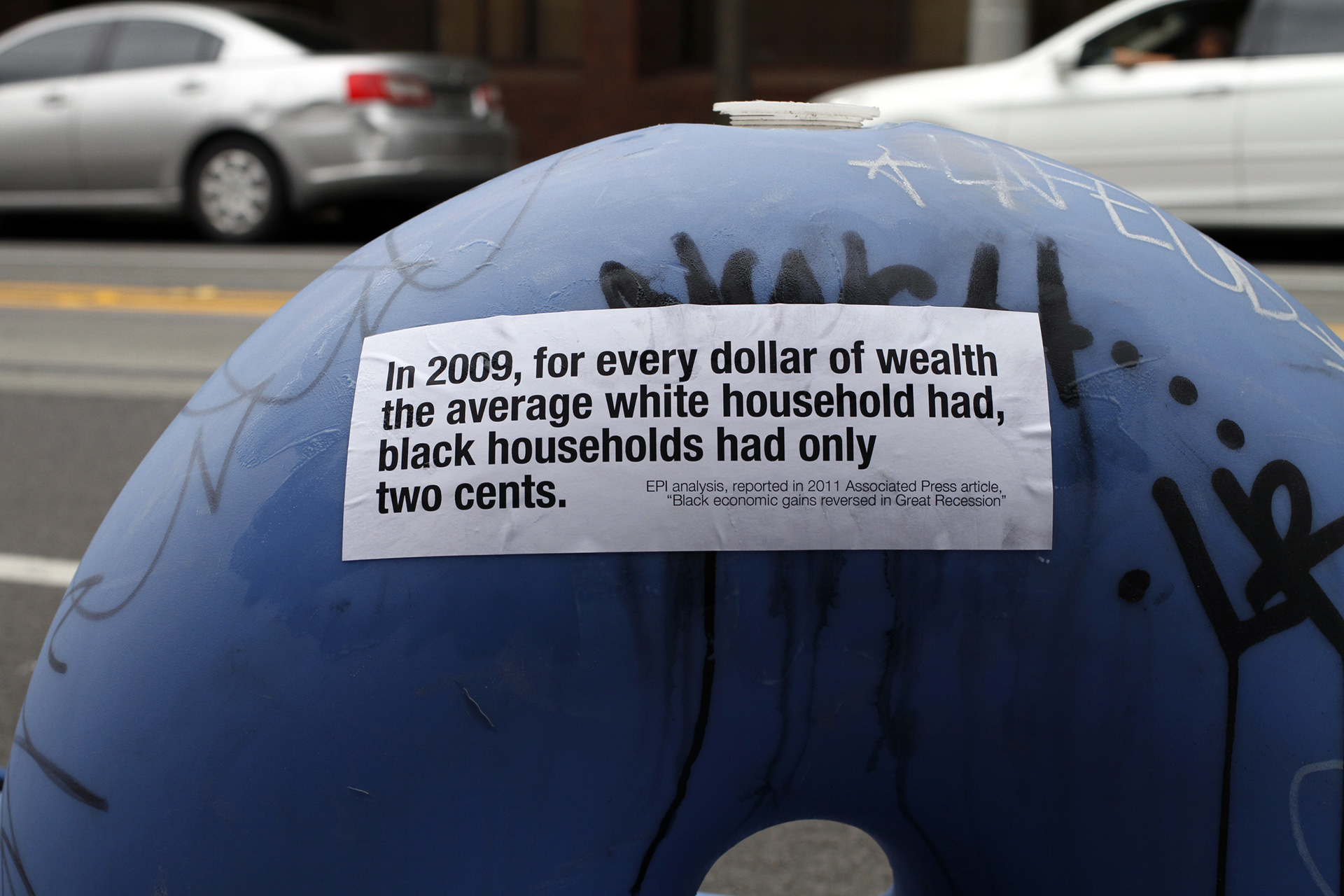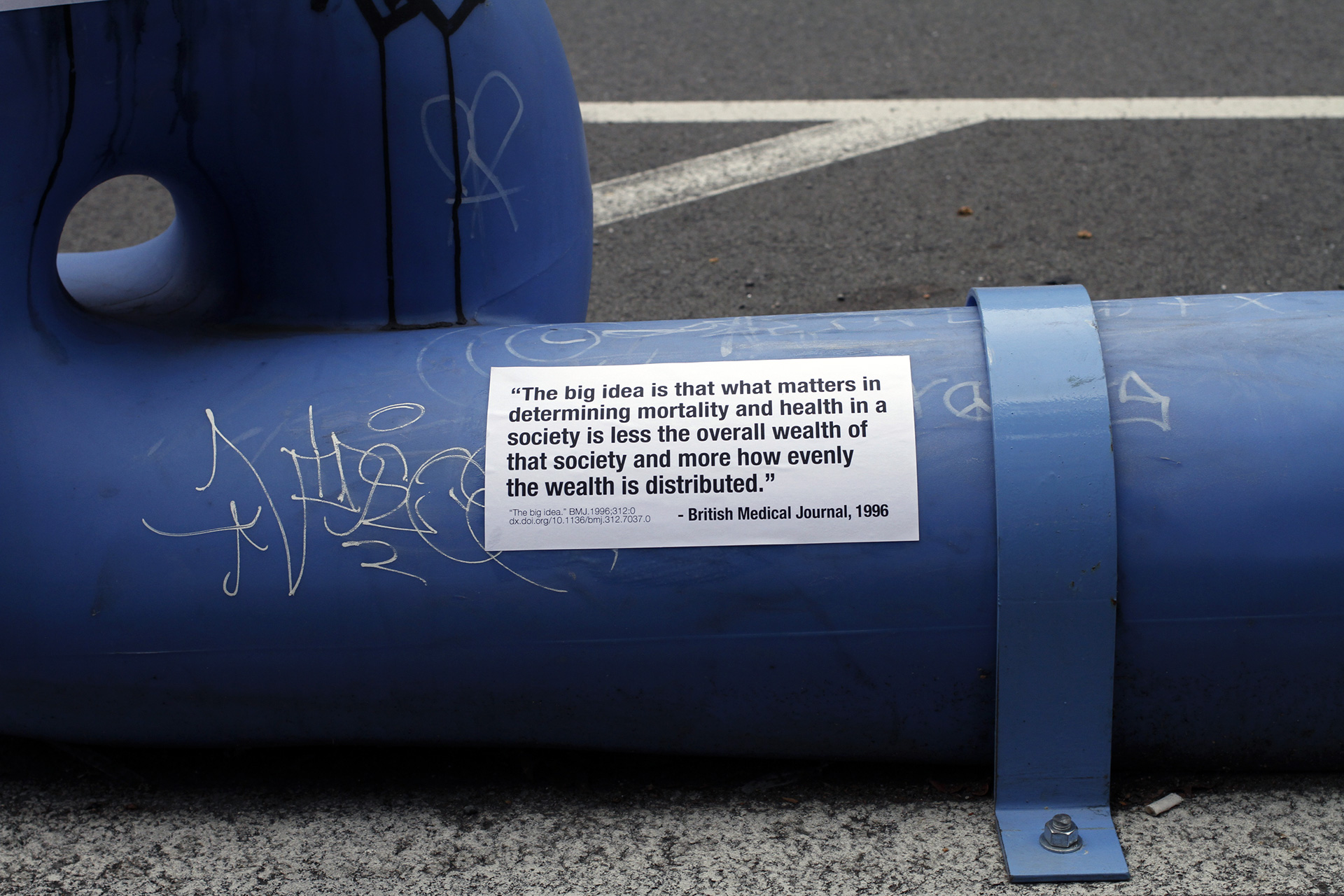Wealth? Or income?
It probably wouldn’t be a surprise to most (who are paying attention, at least) that African Americans earn less money on average than their white counterparts. While the reasons for this are a complex discussion all on their own, it’s important to note that the word we’d normally use to express these earnings — the word “income” — is not the word used in the data visualization above. Instead the visualization uses the word “wealth”, which includes not just income but also assets, such as a home, vehicle(s), stock portfolio, and so on. Income accumulated over time becomes wealth. And so examining wealth is one way to see the generational legacy of income, since parents leave wealth to their children.
Racist structural policies of generations past, including low interest FHA home loans, social security benefits, and GI bill benefits, all that largely excluded people of color, are just some of the ways in which wealth gaps of the 20th century were cemented. Unfortunately, redlining and other predatory housing practices led to the Great Recession disproportionately affecting the wealth of black families, increasing the gap to a 50:1 ratio.
One key aspect of the social gradient in health as it applies to rich countries is that poverty may be relative as much as absolute. That is, starving is clearly harmful to health, but most people in rich countries don’t starve. So the much of the negative health effects that can be attributed to the social gradient in health may belong to the size of the gap between the top and bottom of society. The BMJ quote is from 1996, and two decades of research have continued to confirm that the size of this gap is critical for population health. To decrease inequality in society improves not just the prospects for those at the bottom, but the prospects for all.





